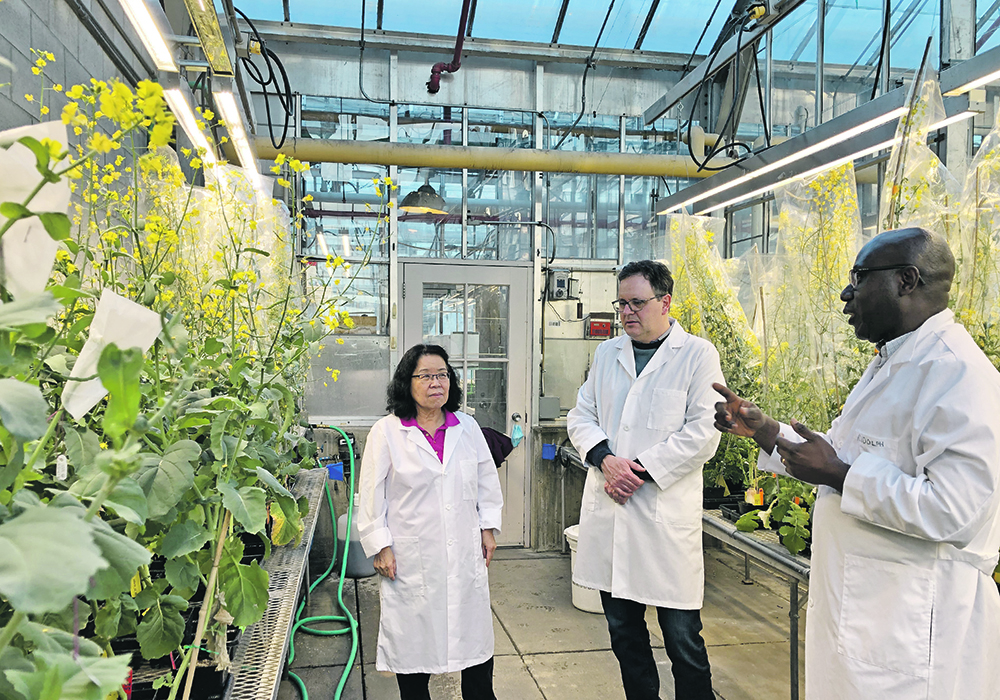Scientists hope to identify naturally occurring genes that boost resistance and then breed that resistance into new canola varieties
Researchers at the University of Alberta have received $1.25 million to look for new ways to help farmers fight clubroot, a disease threatening Canada’s multibillion-dollar canola sector.
As part of a five-year research project, scientists hope to identify naturally occurring genes that boost resistance to clubroot, as well as breed such resistance into new canola varieties and develop new ways to control the disease, said a release from the university.
The main goal is to help canola farmers, but the research could also help fight the disease in other cruciferous crops, said Stephen Strelkov, professor of plant pathology in the Faculty of Agricultural, Life and Environmental Sciences.
Read Also

Gap in emission regulations hamstrings Canadian hybrid truck manufacturer
A B.C. company building hybrid engines for heavy trucks says they have the opportunity to build something leading edge in Canada, but our own laws are stopping them from doing it.
“It’ll help to build up our knowledge of the genetics of clubroot resistance.”
Clubroot, first discovered in a handful of fields near Edmonton in 2003, has since been detected in nearly 4,000 in Alberta, said Strelkov.
The disease was previously viewed as something that only infected cruciferous crops, such as cabbages in market gardens, he said.
“And it’s also become a bit more common in Saskatchewan and Manitoba as well, but before that, it had not been an issue in canola in Western Canada until the early 2000s.”
Canola exports provided $12.9 billion last year to the Canadian economy, with $4 billion of that total coming from Alberta, said a university statement.
Besides Strelkov, the project will include professor Sheau-Fang Hwang and senior research associate Rudolph Fredua-Agyeman of the University of Alberta. They plan to compare the genomes of 30 hosts, including six agriculturally important cruciferous or brassica species.
“These are all close relatives and include not only canola, but cruciferous vegetables such as cabbage,” said Strelkov in an email. “The work will allow for a unique and large-scale analysis of the genetics of clubroot resistance.”
Funding for the project includes $833,000 from Alberta’s Results Driven Agriculture Research (RDAR) agency, with the rest of the money coming from the Alberta Canola Producers Commission and the Saskatchewan Canola Development Commission.
Clubroot is caused by a parasitic, single-celled organism called Plasmodiophora brassicae. Different strains can infect a range of cruciferous crops besides canola and cabbages, including radishes, turnips, rutabaga, kale, kohlrabi, cauliflower, brussels sprouts and mustard.
It causes tumour-like growths on the roots of canola plants, reducing their ability to absorb water and nutrients, said Strelkov.
It can stunt the crop’s growth, lowering yields by as much as 50 percent and affecting seed quality, said a university statement. It can also reduce the value of land by making it less desirable to buyers and renters, it said.
Although the level of viable spores created by the pathogen substantially declines in soil over time, some can persist for as long as 15 to 20 years, said Strelkov.
If a canola variety susceptible to such spores is planted, the infection can reappear in the crop, he said.
“Once it builds up in the soil, that’s what makes management so difficult because once it gets established in the field, it’s very, very hard to completely get rid of it… it becomes more of an issue of managing it rather than actually being able to completely get rid of it.”
An integrated control approach includes proper crop rotations and sanitizing machinery. Farmers can also add lime to soil to increase its pH, which helps reduce the disease’s severity, said Strelkov.
However, he likened the problem to an arms race with the pathogen as it evolves new strains.
“We’ve been kind of staying ahead of it, but it’s a big risk and definitely when it breaks resistance, it can cause significant yield losses. So, it’s definitely, I would say, one of the major diseases of canola now in Canada.”
















